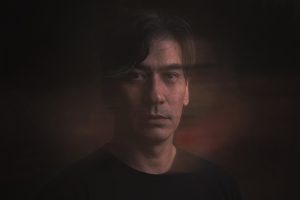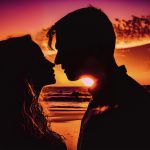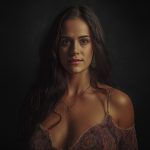I recommend reading the article first - Light, the principle (Part 1)
Another important characteristic of light is its appearance, as it may have a hard or soft pattern, depending on the way it is emitted. Each of these patterns has advantages and disadvantages that must be considered according to the subject to be photographed. Hard or soft light?
For example, on a sunny day we notice how the shaded areas cut out the illuminated areas with high contrast. This attribute indicates a hard light. It has the advantage of accurately highlighting the texture of the areas, increasing the brightness and contrast of the scene, in addition to enhancing the colors. However, a cloudy day that presents soft shadows, without contrast and with pale colors, can also be indicated for photographing people or environments.
There is a certain light for each situation. However, if we have an inadequate light, there are resources that can improve the result.
Light balance
Is a good exposure the balance of the amount of light? Not always, as it depends on the result you want.
First, before each shot, we must check the amount of light present in the scene. This assessment is called photometry. The measurement in the environment is made by a light meter called a photometer, present in all cameras. However, this pointing can be done automatically by the camera or conducted by the photographer.
Photometer
Second, the photometer makes the average reading between the light and dark areas of a scene. When done in automatic mode (A - P), it only divides the distribution of reflected light that reaches the sensor through the diaphragm and shutter into equal parts. However, when done in manual mode (M), it is the photographer who decides the relationship between diaphragm and obturator according to the expected result. However, the important thing is to achieve a compromise between the amount of light in the photo, either in automatic or manual mode.
The amount of light must be correct when it reaches the digital sensor, avoiding too light or too dark pictures. To do this, you need a balance between the four basic items of any photograph:
Light + ISO + Diaphragm + Shutter
Likewise, the photometer reads in different ways, measuring the light present only in the central part of the frame, or considering the average recorded across the frame. But, the photometer built into the cameras does not always achieve an ideal relationship. Especially in situations with great variation of light, where very light areas are with very dark ones. Sometimes, the main subject is outside the sector, hampering the measurement. However, the HDR system can solve the problem.
In the internal calibration of the cameras, an average between the light and dark of the scene is taken into account. But, often, the photographed image is naturally clear and the measurement shows a relationship in which the amount of light is more intense than that of the environment or the subject to be photographed. Therefore, such a situation can lead the photographer to error, resulting in very dark photos. However, the opposite is true for naturally dark subjects, resulting in pictures that are too bright.
Light Sources
All light sources mentioned, both natural and artificial, are considered continuous sources. However, there is only one type of light that does not follow this rule: it is the explosion light, similar to an electrical spark, or the light of the rays that precede thunder during the storm, called the flash.
Some period films bring scenes in which former photographers, using a container loaded with gunpowder, detonate the charge at the time of the click, emitting a strong flash to illuminate the subject. At the same time that the balance of the amount of light was controlled by the photographer. This exploded the gunpowder, synchronizing the sparkle of the spark with the opening and closing time of the camera shutter curtain.
However, disregarding the noise, the dirt and the smell, the biggest disadvantage of this system was that the light emitted was scattered everywhere and only a small part of it illuminated what was being photographed.
Flashes
Modern flashes have reflectors that direct light, calculate the distance and power required to reach the subject properly, according to the aperture of the diaphragm and the shutter speed of synchronism.
The more advanced ones have a set of lenses that increase the range of the flash light for photos captured by telephoto lenses, or diffusers that increase the range of the flash for photos with wide-angle lenses.
The most common flash, found in compact amateur cameras and semi-professional reflex cameras, are known as built-in. These models are embedded in the body of the machine and, despite being easy to use, their reach and resources are limited with regard to shadows and unwanted reflections.
Another very popular type is the external flashes, which work connected to the camera body by means of a cable. As they are not attached to the system, they require special care. To avoid surprises, we must consider the compatibility between the camera and the external flash. Otherwise, the use of the accessory can permanently damage the equipment.



External flashes can be attached to the camera via the sync cable or placed directly on the flash shoe.
TIP 1
When using an external flash, check the optimum sync speed between the flash blink and your camera's shutter speed, set by the manufacturer. This speed is unique to each model, and can vary from 1 / 30s to 1 / 500s. We can synchronize the flash output using shutter values below the sync speed (longer time). However, when we work with shutter speeds faster than sync (shorter time), we will lose part of the image covered by the shutter curtain.
External flashes are available in several options, and there are specific types for each photo - there are even underwater models. Another example of external flash are those used in professional studios. They feature two models: one compact and the other with a separate generator. In addition to being powerful, they have a modeling lamp that guides the photographer as to the direction of the lights and shadows, allowing many light options with varied accessories. However, even these do not reach great distances.
TIP 2
The flashes can have great powers, offering an enormous amount of light, but with little range, that is, hardly a common model will reach distances greater than 5m. Therefore, there is no use firing the flash towards the stage in a football stadium if you are watching the grandstand show, as this light will never reach the artist!
TIP 3
Use the flash even on photos taken during the day. It is very useful in situations where there are shadows that hinder the main subject. For example, in photos taken with the sun upside down, where the subject is wearing a cap, the shadow will be projected on the face leaving it dark. The light from the flash will clear the shadow and illuminate the face without harming the rest of the landscape. Try it!
Why do we have red eyes in some photos?
The red-eye phenomenon that spoils our photos is the fault of the flash. The following happens: when shooting in poorly lit places, we need the help of the flash. Because of the dark place, the pupils naturally increase in diameter due to the small amount of light.
The moment the flash flashes suddenly, this strong light invades the inside of the eyes, reflecting the blood at the back of the eye. To avoid this, some cameras have the red-eye reduction feature, which is very simple to execute: when firing the camera, it throws a flashing light in the direction of the subject before the main flash fires, which reduces the pupils' diameter, the occurrence of the red-eye phenomenon.
TIP 4
FLASH + ENVIRONMENTAL LIGHT
In some situations, flash light can be used to fill areas of the image that have been shaded or even stained by unwanted shadows. It is a technique that associates ambient light with electronic flash as a fill light. The amount of explosion light provided by the flash must be balanced with the continuous light of the environment in order to have an ideal combination between the two light sources, avoiding overexposure, that is, images that are too bright.
Night shots - Photos shaded and cleaned by the flash light.
To shoot in low light environments without the aid of the flash, it is necessary that the camera is fixed in the act of taking the photo: the ideal is to use a tripod. However, the area of a table or even the corner of a window can serve to keep it stable. In this way, blurry images are avoided. The higher ISO setting also facilitates the capture of darker scenes, however, noise may occur in the image, in the form of pixelation, which can decrease the sharpness. Some editing programs help to minimize the problem.
Almost all image editors have adjustments that can help balance a dark photo. Some are very simple to operate, just activate the automatic exposure adjustment (AE) command or manually correct the brightness, contrast and shadows according to the photographer's desire.
TIP 5
When choosing your lens or telephoto lens, pay attention to the number written on the front of the lens, along with the letter 'f': it indicates the maximum aperture that the lens reaches. The smaller the number, the larger the aperture and the more light it will be able to capture. So an f / 2.8 lens is better for shooting in the dark than an f / 4, for example.
Anyway, we will meet in the next article on photographic technique.
So, did you like the article and want to contribute a coffee of thanks? Make your contribution through the QR Code below. Help the Foto Blog that helps you. Any value is welcome! A coffee is R$2 here, for example.

Related articles
| Make long exposure | Types of cameras | Light the principle (part 1) | Light the principle (part 2) |
| Photographer | Saquarema | Photo | Photography | Online Gallery | FotoBlog | Claude Monet | Photographic Technique | Color Photographic Technique | Light The Principle | Light | Kelvin scale |





